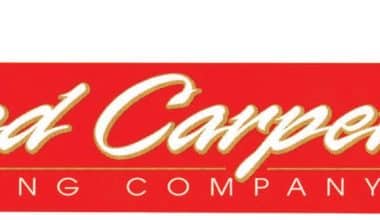If you’ve ever thought of what the Honda logo looks like, then you’re not alone. The logo is simple yet striking.
Both the brand name Honda and its creator, Soichiro Honda, are referenced in the capital H. The H’s bottom and upper dimensions differ in the official logo. The shape, according to some, is very similar to someone lifting their arms in the air.
You’ll learn more about this Honda logo in the course of this article, so let’s get the ball rolling.
Honda Logo
The Honda logo, which is a capital “H,” debuted as the company’s badge. The letter “H” identifies Soichiro Honda in his name.
The capital “H” appears to have raised arms toward the sky because it is wider at the top and thinner at the bottom. The Power of Dreams is Honda’s official tagline, and vice versa.
The Honda logo is currently one of the most recognizable and well-liked automobile logos in the industry. It stands for the caliber, dependability, and assurance of each vehicle made under the company’s brand.
From 1996 until 2001, Honda produced and sold the Honda Logo, a B-segment supermini with a three-door and five-door hatchback that shared a platform with the Honda Capa and took the place of the second-generation Honda City.
The Honda Fit replaced the Logo, which was bigger than the Kei class Honda Life and smaller than the subcompact Honda Civic.
One of the most recognizable logos in the world is that of Honda. The Honda logo has a capital “H” and has largely remained constant throughout its existence. The term “Honda” may also be displayed beneath the logo in a bold red typeface in some renditions of the Honda logo.
Simple yet striking is the Honda logo. Both the brand name Honda and its creator, Soichiro Honda, are referenced in the capital H. The H is thinner at the bottom than it is at the top in the official logo.
The most traditional logo is the one used by Honda, according to the Guinness Book of Records. In fact, over the company’s entire history, it stayed constant. It is the most reliable logo of the twenty-first century, despite the fact that this situation is the consequence of numerous distinct factors, none of which were established just by the brand’s concept.
Honda Logo Font
The strong serif typeface used to create the Honda logotype has broad lines and precise curves. It is a unique font that resembles Clarendon Bold and fonts from the Colt Family quite a bit.
The huge serifs, which nonetheless seem elegant and give the wordmark more clarity, are the lettering’s most distinguishing feature.
A big typeface with exaggerated square serifs is used to set the uppercase Honda inscription from the Japanese company’s primary logo. Clarendon No 1 Bold Expanded is most likely the typeface that comes closest to the one used in this sClaredo
History Of Honda Logo
Soichiro Honda, a Japanese engineer, inventor, and auto racer, created the Honda corporation in 1946. His daring, clever, and out-of-the-box method of thinking and acting is how the company has survived for all of its more than 50-year history.
The Honda logo is a capital H, although it obviously has a unique design. Soichiro Honda, the company’s founder, is named with the letter H. Honda’s tagline is “Dream power.” This is a precise description of what the business does.
The Honda Motor Company has grown over its existence to become both one of the top manufacturers of automobiles and the world’s largest maker of motorcycles.
1961 – 1969
When it was first introduced in 1961, the Honda insignia was extremely cutting-edge and fashionable. In the logo, a large, stylised letter “H” with rounded corners and thin lines was encased in a trapezoidal frame. The letter itself had the same shapes as the frame, but its bars were cut straight, and all of its corners were distinct and sharp.
1969 – 1981
The Honda logo underwent a facelift in 1969, but the “H” remained the primary component of the brand’s visual identity. The letter grew bolder, but also had a narrower profile and softer outlines. The frame’s shape also changed, growing taller and more angular, giving it a more elegant appearance. For a decade, this badge was associated with the Japanese company.
2000–Now
The 2000 revision only marginally improved the old Honda badge, extending the logo while essentially leaving all the parts’ shapes unchanged. With the huge serif logotype now appearing less threatening, the badge’s overall design composition now appears more cohesive.
Founder Of Honda
Soichiro Honda established the company in 1946 to produce both entire motorcycles and motors for motorized bicycles. In 1948, the independent motor manufacturer debuted. They first started making cars in 1962. The hood of the first car, a tiny pickup vehicle for business use, included the Honda insignia. A sports automobile with a two-door roadster body was the second production vehicle.
The brand’s creator, Soichiro Honda, was a gifted engineer. He stopped going to school when he was 16 and stopped doing his homework. Despite having no formal education, he gained a lot of knowledge working at auto shops. He finally opened his own vehicle repair shop when he was just 20 years old.
Evolution Of Honda Logo
The capital letter “H” is a recurring motif in both the new Honda logo and the previous Honda logo, which makes them both quite similar. Because the company wished to rapidly remind people of its name, using the “H” as the official sign of Honda was a straightforward choice.
The Honda company produced small pickup trucks with the original Honda insignia on the bonnet in the beginning for commercial use. Honda’s second manufacturing vehicle was a sports car with two doors and a roadster design.
Since then, the company has created a variety of tools and vehicles, each of which features a different variation of the Honda logo.
1961
The Honda logo logo’s original design is very different from the one that is currently in use. For eight years, the badge was owned by the Company. A light blue “H” was in the middle of the red rectangle in this vintage Honda logo, which had a burgundy red background.
Style-wise, the H was unique since it had a top part that was significantly wider than the bottom.
Underneath the stylised and enlarged letter “H” was the word “Honda.” Simple serif typeface with highly clear, readable capital letters was the original option.
1969
The 1969 Honda logo was a significant departure from the earlier design. The symbol, or capital H, was the only part of the Honda automobiles insignia that was still visible. They eliminated both the name and any coloration from the symbol. Instead, a white H was presented against a dark background.
The “H” was considerably narrower in this iteration of the Honda logo, but the upper half of the capital letter was still significantly wider than the lower.
1981
The Honda logo underwent another alteration in 1981, and the new version was remarkably close to the current one.
Redefining the logo’s lines, they added a black border to the “H,” which was printed in letters on a white background. With rounded edges, the insignia had a shape like a rectangle.
Once more, the Company displayed its name in a bold, black typeface beneath the official Honda logo.
They used all capital letters in the typeface, which was a thick serif.
2000 logo
Honda improved its appearance in 2000 by adding additional texture and color. A brilliant crimson hue of the word “Honda” now appeared. The old logo was stylised, with the H assuming a 3D silver design, and the red Honda wordmark sitting beneath it. Also somewhat enlarged toward the top are the silver Honda “H” arms.
What You Should Know About Honda Logo
Customers may associate Honda with safety and comfort because some experts have compared the “H” in the company’s logo to an armchair. Others have linked the style to a person reaching upward with his arms, in keeping with Soichiro Honda’s maxim that “everything is possible.”
Even if both hypotheses could be true, the following three design factors influenced the Honda logo:
- Its symbol: A variant of the letter “H” served as the brand’s logo always. One of the most recognizable brands in America was intended to be instantly recognized by the Honda’s name.
- Font: they intended it for the font to be basic, yet bold. The capitalization provided recognition from a distance, while the serif typeface allowed for legibility.
- Color: Silver, black, and red have been the primary colors used in Honda’s logo over the years. In Japan, red is a common color that is universally linked with royalty.
Honda Logo Wing
Soichiro Honda created the Honda Wing logo in 1947, just before the Honda Motor Company was established, as a representation of his vision for the future prosperity of his company.
At the time, Soichiro drew inspiration from Nike, the Greek goddess of victory.
They typically portray Nike with wings in paintings and sculptures; the most well-known example is the “Winged Victory of Samothrace,” which is currently on display at the Louvre Museum in Paris.
1947
On the 1947 model A-type gasoline tank, the original Honda Motor logo which included elements of the Nike wing shape, can be seen.
1948
In the 1948 versions of the B-type and C-type, they enhanced the business logo to include the Nike figure. On the 1949 D-type and 1951 E-Type models, the logo remained the same.
1953
This unique, Benly-only wing logo can be found on the fuel tanks of the Benly model range, which runs from the 1953 J-type to the 1958 JC-58. For the new Benly range of models, they designed the Wing into a double layout, creating this distinctive, Benly-only wing logo.
1950s/60s
The design shown here developed from a new single-wing logo that Honda produced in the late 1950s and pushed for Honda Motor.
The fuel tank of the 250cc twin Dream C70 is where this concept originally appeared on a Honda product in 1957.
As they widely acknowledged their racing accomplishments, they featured the previous versions on the company’s RC racing bikes in the 1960s, which strongly promoted the Honda brand all over the world.
1973
At this time, the wing logo design was improved even further and the whole name of Honda was added, along with the yellow color.
On the fuel tanks of practically all models of road bikes from the 1970s, there was no wing logo, only the word “HONDA.”
The CR250M and CR125M models from 1973 to 1974 were the first to feature this newest Wing design for off-road motocross vehicles.
Many CR and other off-road versions featured this 1973 Wing logo at the time.
1980s
The wing insignia didn’t resurface on a production road bike model’s gasoline tank until 1981, the CB1100R!
Minor improvements to the 1973 Wing logo appeared in numerous models during the 1980s, including this tri-color (red/white/blue) variety.
1988
A new Wing logo was developed and unveiled to coincide with Honda Motor Co.’s 40th anniversary to mark the momentous milestone.
2000s
They still use the Wing logo today, but with a few very minor changes from the original design from 1988.
Honda Autos
With its headquarters in Minato, Tokyo, Japan, Honda Motor Company Limited is a worldwide corporation whose primary activity is the production of motorbikes, cars, and power equipment.
Soichiro Honda, a Japanese engineer, inventor, and motor sports enthusiast, founded Honda in 1946. The clever, audacious, and outlandish behavior and manner of thinking of Mr. Soichiro led to the Honda we see today with its current form and a history of more than 50 years.
Honda debuted its first motorcycle in 1949, and by 1959 it had grown to become the largest motorcycle manufacturer in the world, a title it continues to maintain today with more than 400 million motorcycles produced worldwide.
With an annual output of at least 14 million internal combustion engines, Honda is also in the lead when it comes to this industry. This makes them the largest volume producer in the world. In 2001, Honda became the second-largest Japanese automaker, and in 2015, it ranked as the eighth-largest automaker globally.
Honda became the first Japanese automaker to introduce a specialized luxury brand in 1986 with the debut of its Acura brand. Honda produces a variety of products in addition to its primary business of making cars and motorbikes, including marine engines, power generators, garden tools, personal watercraft, and other items.
As a result of Honda’s interest in robotics and artificial intelligence, they unveiled the ASIMO humanoid robot in 2000. By founding GE Honda Aero Engines in 2004 and releasing the Honda-made HA-420 Honda Jet in 2012, Honda entered the aerospace business.
Honda Logo Motorcycle
1957 saw the debut of the original Honda motorcycle badge, which was only used for a single year. The word “Honda Motor” was written in handwritten cursive on a smooth, bold white background on a rounded, horizontally extended blue banner. With a stylised, delicate wing-like motif in its left portion, the logo had a white and gold outline. Also accented in gold were the clean white letters.
Honda Motor’s logo became more confident and readable in 1948 after a revision. The white cursive text changed to capital sans-serif Ted and was outlined in white, making the blue badge broader and taller.
They positioned a gold human figure racing to the right along the badge’s right edge to contrast with the gold framing. In order to obscure the “Honda” inscription and give the logo a sensation of movement and mobility, a stylized wide geometric wing in gold was positioned behind the man’s figure.
From 1953 to 1968, Honda Motor used a badge with two metallic wings that were pointing upward and outward.
This version was completely devoid of lettering or any other decorative elements, and it spoke for itself when it came to conveying the freedom and speed that the motorcycles of the brand offered their riders.
They unveiled the new Honda Motors badge in 1968. The “HM” lettering was inside a horizontally oriented oval, and beneath it was written “Honda” in bold letters. The oval-shaped frame had a large, intricate wing that emerged from its left side and stretched up-right.
Read Also: REEBOK LOGO: Meaning, The Reason Reebok Uses the Triangle Logo and History
Only the nameplate’s outline was done in a bold red color; They created the rest of the badge in a monochromatic color scheme.
Several months later, the logo underwent a simplification process that included getting rid of the red oval edge and replacing it with a double black-and-white one. The inscription “Honda” in an arched font was another element that was removed from the badge. At this point, the only brand symbol on the badge was a “HM” in bold black sans-serif.
In 1973, the fancy wing was strengthened and improved. Its lines were sharpened, polished, and given a new color scheme of gold and black. The major feature, the oval insignia, was gone, and in its place, a wing protruded from the large, powerful “Honda” logotype using the same color scheme.
The wordmark’s uppercase lettering and use of the recognizable business Honda serif typeface, along with its rigid, confident lines and thick, black outline, gave the overall design additional professionalism and stability.
The Honda Motors logo now uses the colors white and black for the inscription and white, black, red, and blue for the wing. In 1985, the contours of all the elements were refined and slightly softer.
Although the letters and wing’s design remained recognizable, the new color palette gave the logo a lighter, more modern feeling that suggested freedom and a determination to move forward.
Honda Cars
Honda Prelude from 1983
Retractable headlights, a stylish exterior, and a powerful 4-cylinder engine were available on the Honda Prelude’s second generation. Because it demonstrated that the company could create a sports coupe that was incredibly entertaining to drive, the 1983 Honda Prelude was a crucial part of Honda’s history.
1989 Honda NSX
During the 1989 Chicago Auto Show, the Honda NSX from 1990 was on display. The 1990 Honda NSX was designed to compete with high-end exotic cars but cost a fraction of the price. It sat low to the ground and had front and rear double wishbone suspension, further showcasing Honda’s engineering prowess. In America and Hong Kong, later NSX iterations are marketed as Acura NSX vehicles.
Honda CR-V from 1997
The Honda CR-V transformed the family car segment for people all across the United States and beyond, despite not being the most romantic automobile on the market when it debuted in 1997.
Honda Cross Tour from 2013.
Small families or couples could fit in the 2013 Honda Crosstour, a medium crossover SUV. A more potent and fuel-efficient J35Y V6 engine was included in the 2013 Crosstour edition, which also had a lower starting price than earlier models. Interestingly, Seattle drivers may find these active safety features on current Honda cars, just like the 2013 Honda Crosstour did.
Statistics And Facts About Honda
#1. Since 1959, Honda has dominated the global motorcycle industry.
Honda has made the most motorcycles compared to all the other companies in the market. While this brand is generally recognized for its automobiles, it seems like they ought to be more well-known for their motorcycles. They produced over 400 million motorcycles in 2019.
#2. To fund its R&D, Honda allocates about 5.7% of its revenue to it.
The amount of money Honda invests in its research and development has led to its reputation as one of the most inventive businesses in the world. About 5.7% of their annual income is added to research to find and develop new products.
#3. In 1946, the company established its first research facility.
The development and manufacture of internal combustion engines was the main goal of this institution. The manufacturing procedure for these engines is a major focus of this center’s research.
#4. In terms of internal combustion engine production, Honda leads the pack.
Aside from producing the most internal combustion engines of any manufacturer, Honda is also constantly improving its technology. In a typical year, they make more than 14,000 engines.
#5. As a Japanese automaker, Honda ranks second.
They ranked honda second when you simply compare them to other Japanese automakers. They fall behind a lot of other manufacturers in the international rankings, coming in at ninth. Despite being a far cry from the largest, they nonetheless have a major impact on the market.
What Does Honda Logo Mean?
Hondo logo represents a timeless symbol of excellence and dependability, they recognize the Honda logo worldwide. Honda has cemented its position in automotive history by creating distinctive automobiles and motorcycles that are known throughout the world. The company has benefited much from the logo throughout the years, despite the fact that it may not be the world’s most eye-catching.
Does Honda Have a New Logo?
Yea, but the only thing that sets the new logo apart from the old one is the larger letter “H” in the trapezoid border. At the Honda Civic’s debut in 2000, car aficionados first saw this variant. We have traditionally represented honda with a capital “H,” rendered in an evocative and distinctive manner.
Why Does The Honda Logo Have a New Wing?
A new Wing logo was developed and unveiled to coincide with Honda Motor Co.’s 40th anniversary to mark the momentous milestone.
What Engine Is The Honda Logo?
A full range of tiny, general-purpose engines are available from Honda Engines for use in commercial, rental, and consumer applications.
The top manufacturer of engines for the construction and rental markets is a Japanese company, and its engines are renowned for their toughness and power. Worldwide, Honda has produced more than 100 million power products since 1953.
Conclusion
On all the brand’s goods, the Honda logo symbol has always been a stylised letter “H” in some form. Although the sign is a representation of the name “Honda,” it also has additional meaning. A traditional armchair is what the logo is supposed to resemble, according to some experts, to represent safety.
In 1948, Soichiro Honda established Honda in Minato, Tokyo, Japan. The Honda logo, a trapezoidal “H,” is the last name of Soichiro and can be seen on the front of Honda automobiles.
Related Articles
- CHEAP CARS FOR TEENS: Top 10 Trending Cheap Cars In 2023
- CRUCIAL BUSINESS QUESTIONS for Small & Large Businesses 2023
- JAPANESE CAR BRANDS: A Complete List of the Best Options in 2023
- What Are the Most Reliable Car Brands of All Time? (Extensive 2023 List)
- BEST CAR BRANDS for Reliability in 2023 (Top Picks & All You Need)






